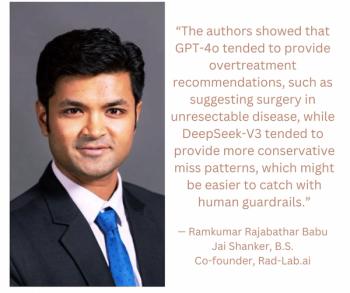
Medicare to Cover AI-Powered, CCTA-Based Coronary Plaque Analysis and Quantitative Coronary Topography
Four Medicare administrative contractors (MACs) will provide coverage of AI-enabled coronary plaque analysis and quantitative coronary tomography assessment of coronary computed tomography angiography (CCTA) for Medicare beneficiaries starting in November 2024.
The use of artificial intelligence (AI) tools to provide quantitative coronary tomography (AI-QCT) and coronary plaque analysis (AI-CPA) based on coronary computed tomography angiography (CCTA) will soon be covered by four Medicare administrative contractors (MACs).
Starting on November 24, the MACs Palmetto GBA, National Government Services (NGS), CGS Administrators and WPS administrative groups will cover the use of AI-QCT and AI-CPA for Medicare beneficiaries with acute or stable chest pain, and no known coronary artery disease (CAD), according to a recently updated local coverage determination (LCD) issued by the Centers for Medicare and Medicaid Services (CMS).1,2
The LCD noted coverage of AI tools will be provided for the testing of patients deemed to be at intermediate risk for CAD, or those classified by the Coronary Artery Disease Reporting and Data System (CAD-RADS) as having CAD-RADS 1, CAD-RADS 2 or CAD-RADS 3, based on CCTA findings. The coverage will also apply for those who have had negative or inconclusive evaluation for acute coronary syndrome (ACS), according to the LCD.1
The use of the FDA-cleared AI modalities
“Coronary artery disease is the underlying cause of about 50% of deaths,” noted Ron Blankstein, M.D., the director of cardiac computed tomography at Brigham and Women's Hospital and a professor of medicine at Harvard Medical School in Boston. “Medicare coverage of HeartFlow Plaque Analysis is a major step forward in improving coronary artery disease management. The earlier we can diagnose and use tools to provide accurate plaque quantification, the earlier we can provide tailored treatments, potentially improving outcomes for patients.”
“We are also extremely thankful to the many physicians and medical society partners who used their voices to advocate for this essential AI-QCT technology. Until Cleerly, health-care providers have not had a way to easily and completely assess the primary cause of heart attacks, atherosclerotic plaque burden and type in a non-invasive way, which is especially important for our senior population,” noted James L. Kim, M.D., the CEO and founder of Cleerly. “This decision by the MACs represents a significant step in advancing the field of cardiology and providing the best possible care for our seniors.”
(Editor’s note: For related content, see “
References
1. Centers for Medicare and Medicaid Services (CMS). Artificial intelligence enabled CT based quantitative coronary topography (AI-QCT)/coronary plaque analysis (AI-CPA). Available at:
2. Cleerly. Medicare administrative contractors approve coverage of Cleerly heart scans to Medicare recipients. Business Wire. Available at:
3. HeartFlow. HeartFlow announces favorable coverage determination for plaque analysis by four Medicare administrative contractors. GlobeNewswire. Available at:
4. Elucid. Elucid announces favorable Medicare coverage of AI coronary plaque analysis. Business Wire. Available at:
Newsletter
Stay at the forefront of radiology with the Diagnostic Imaging newsletter, delivering the latest news, clinical insights, and imaging advancements for today’s radiologists.




























